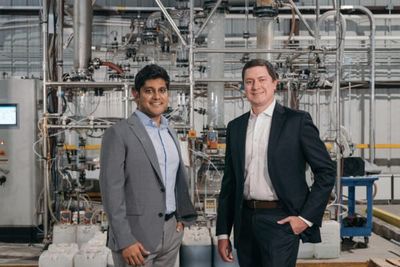
Solugen claims a spot on CNBC’s annual Disruptor 50 list, which highlights private companies that are “upending the classic definition of disruption.” Photo via solugen.com
Houston-based biotech startup Solugen is making waves among innovative companies.
Solugen appears at No. 36 on CNBC’s annual Disruptor 50 list, which highlights private companies that are “upending the classic definition of disruption.” Privately owned startups founded after January 1, 2009, were eligible for the Disruptor 50 list.
Founded in 2016, Solugen replaces petroleum-based products with plant-derived substitutes through its Bioforge manufacturing platform. For example, it uses engineered enzymes and metal catalysts to convert feedstocks like sugar into chemicals that have traditionally been made from fossil fuels, such as petroleum and natural gas.
Solugen has raised $643 million in funding and now boasts a valuation of $2.2 billion.
“Sparked by a chance medical school poker game conversation in 2016, Solugen evolved from prototype to physical asset in five years, and production hit commercial scale shortly thereafter,” says CNBC.
Solugen co-founders Gaurab Chakrabarti and Sean Hunt received the Entrepreneur of The Year 2023 National Award, presented by professional services giant EY.
“Solugen is a textbook startup launched by two partners with $10,000 in seed money that is revolutionizing the chemical refining industry. The innovation-driven company is tackling impactful, life-changing issues important to the planet,” Entrepreneur of The Year judges wrote.
In April 2024, Solugen broke ground on a Bioforge biomanufacturing plant in Marshall, Minnesota. The 500,000-square-foot, 34-acre facility arose through a Solugen partnership with ADM. Chicago-based ADM produces agricultural products, commodities, and ingredients. The plant is expected to open in the fall of 2025.
“Solugen’s … technology is a transformative force in sustainable chemical manufacturing,” says Hunt. “The new facility will significantly increase our existing capabilities, enabling us to expand the market share of low-carbon chemistries.”
———
This article originally ran on InnovationMap.